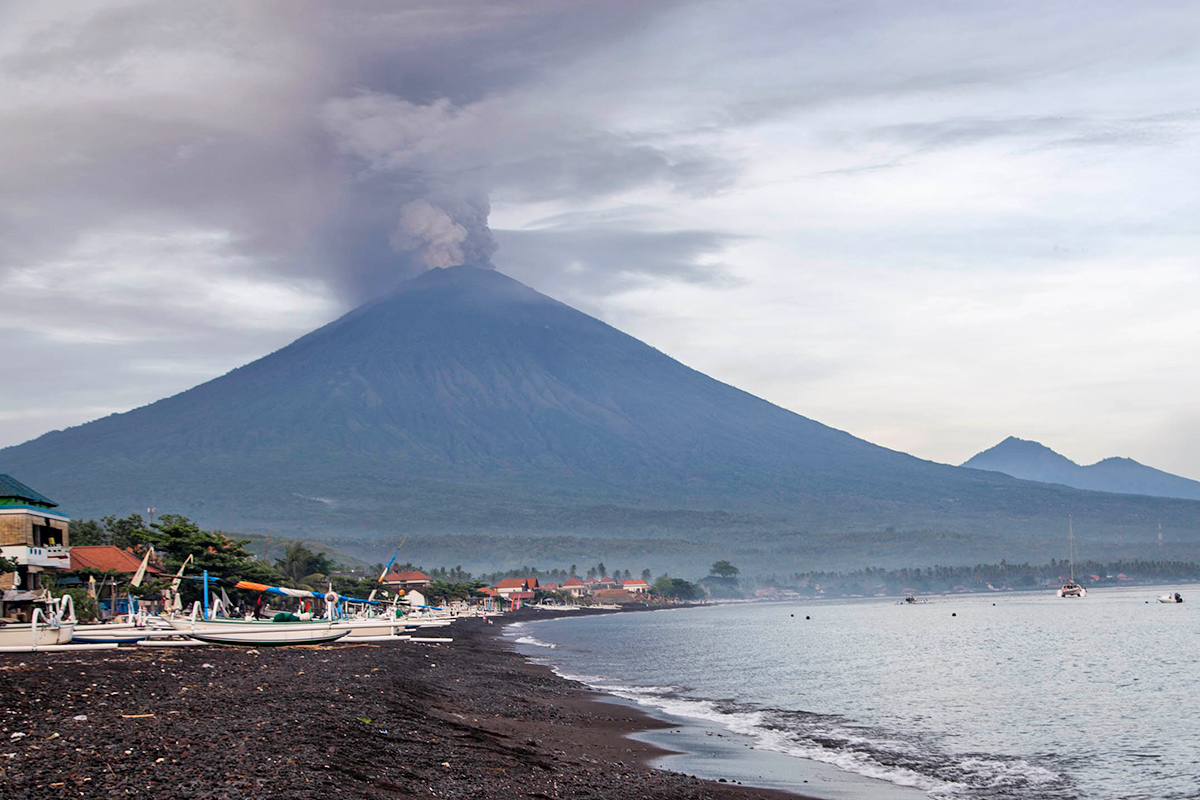Giant Volcano on Bali Is Spewing Ash Clouds, May Erupt Soon

Indonesia's Mount Agung is spewing towering clouds of ash, raising concerns that the giant 10,305-foot-tall (3,140 meters) volcano might have a big eruption soon, according to news sources.
The volcano, located on the eastern side of the resort island of Bali, began erupting ash last Tuesday (Nov. 21). These ashy plumes have reached heights of about 9,800 feet (3,000 m), and have led the government to ask about 100,000 people on Bali to evacuate, according to the Indonesian National Board for Disaster Management.
"The volcano's alert level has been raised to the highest level," senior state volcanologist Gede Suantika told The Jakarta Post. "Constant tremors can be felt." [50 Amazing Volcano Facts]
The volcano's recent rumblings began in September, leading authorities to evacuate more than 140,000 people living near the volcano at that time, The Jakarta Post reported. But Agung's alarming activity dropped in October, prompting the government to lower the warning to the second-highest level and allowing many people to return home.
That changed last week, when the volcano belched out steam — an episode experts are calling a phreatic eruption, when magma heats groundwater and causes it to evaporate instantaneously, sometimes carrying rocky debris.
Some of the volcano's ash puffs are accompanied by explosive eruptions, whose associated booms can be heard up to 7 miles (12 km) from the summit. "The rays of fire are increasingly observed in the next night," the National Board for Disaster Management officials said in a statement. "This indicates the potential for a larger eruption is imminent."
The agency advised people to stay at least 7.5 miles (12 km) from Mount Agung's crater. This zone includes 22 villages and about 90,000 to 100,000 people, government spokesman Sutopo Purwo Nugroho told reporters, according to National Public Radio (NPR). However, just 40,000 people have left, largely because many people don't want to abandon their livestock or don't think the situation is dangerous enough to warrant evacuation, NPR reported.
Sign up for the Live Science daily newsletter now
Get the world’s most fascinating discoveries delivered straight to your inbox.
Government officials also closed Bali Ngurah Rai International Airport (also known as Denpasar International Airport), affecting about 59,000 passengers on 445 flights, according to Business Insider.
Mount Agung last erupted over the course of almost a year, from February 1963 to January 1964, according to a 2012 study in the journal Bulletin of Volcanology. During those eruptions, the volcano blasted out lava, hot gases and volcanic rock fragments, known as tephra, leading to the deaths of more than 1,100 people, according to the study.
Mount Agung is part of the Sunda volcanic arc, which lies above the oceanic crust going under the Java trench in the Indian Ocean, south of Bali, the study reported. Before its 1963 eruption, Agung hadn't erupted since 1843, meaning it had stayed dormant for 120 years, the researchers said.
Original article on Live Science.

Laura is the archaeology and Life's Little Mysteries editor at Live Science. She also reports on general science, including paleontology. Her work has appeared in The New York Times, Scholastic, Popular Science and Spectrum, a site on autism research. She has won multiple awards from the Society of Professional Journalists and the Washington Newspaper Publishers Association for her reporting at a weekly newspaper near Seattle. Laura holds a bachelor's degree in English literature and psychology from Washington University in St. Louis and a master's degree in science writing from NYU.










